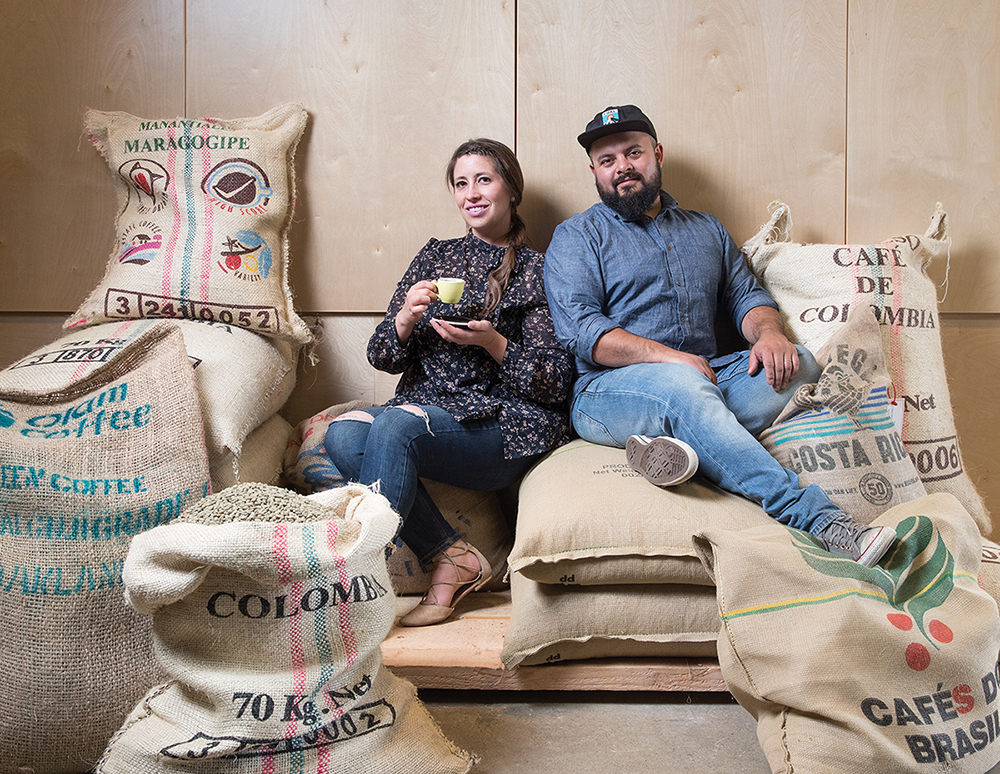Santiago and Kristin dreamed of potentially opening a cafe at some point to complement their roastery, but ended up reaching that point far sooner than they anticipated. While they were running the roastery, Santiago was working in construction, and Kristin was a full-time teacher. “We had a plan for a coffee business to become full time for him a few years down the road, but we eventually realized this is where our passion lies, and to grow our business and expand it and do all the things we wanted, one of us needed to jump into it full-time,” says Kristin. So, while she kept her position as a full-time teacher, Santiago jumped in, and they soon found a space – which he renovated himself. Kristin is planning to flex her muscles as an educator and coffee lover by leading workshops in the cafe, where people can learn about the crop-to-cup process, taste different brews, and even learn how to identify different tasting notes.
“Our vision, our mission, as a business is that we really want to bring community together. A coffee shop is a very connective experience,” says Santiago. “We really want to create community using coffee as our catalyst.”
The Process: Crop to Cup
Santiago’s uncle’s farm is located at 1,600 metres above sea level in a small town called Chinchina and produces washed coffees.
Step 1: The steepness of the farm means the workers must collect the coffee cherries by hand; they go up and down the hills picking, eventually bringing their bags of cherries down to the farm to be weighed, as they are paid per kilogram picked.
Step 2: The cherries go into a holding device, where water is added and all the defective cherries are skimmed out. Then, they are transferred into a wet mill, then a big tank where they ferment for about 18 hours to let the mucilage (the fruit covering the coffee bean) break down.
Step 3: The cherries go into a machine where the mucilage is washed off, then they’re placed on drying beds in a type of greenhouse structure to dry in the sun all day. Three to four times a day, a worker must agitate the beans so they dry evenly.
